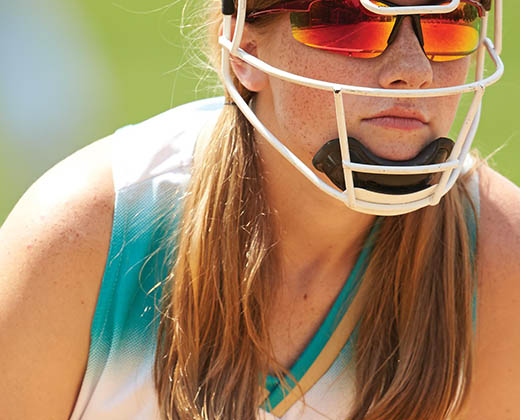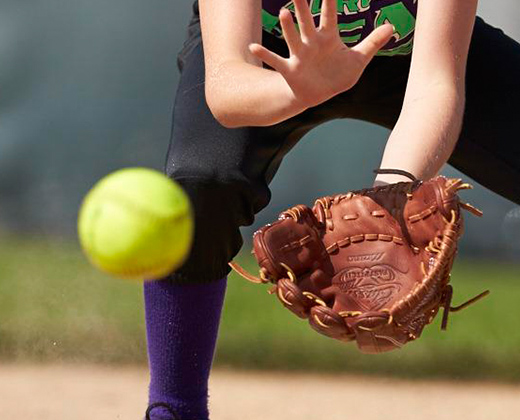What to Know About Softball Fielding Faceguards
Find out why more leagues are requiring the use of faceguards for infielders and pitchers, and how they can help improve your play.
It’s your first game. Coach put you on third base, and you’ve trained hard. You know what to do, what to watch for. Also, you’re nervous. So nervous that chills nip at your arms and it feels like your stomach is bouncing with frogs.
A pitch goes out, and the batter hammers the ball, gunning right for you.
Focus kicks in. You pivot right and a little left. That ball spins, barreling straight for you. If you catch it, you get the all-important out.
WHY ARE FIELDING FACEGUARDS IMPORTANT?
Some players may think facemasks look goofy or that they’re cumbersome, but those cons seem to be outweighed by the pros.
Most obvious is basic safety. But beyond the practical safety, there’s another reason to wear a facemask.
“It’s a great tool for youth athletes,” says Brad Baughman, a DICK’S Sporting Goods Associate, “to play ball without worrying about being hit in the face.”
What Brad’s tapping into is an added benefit that feeling safe brings: confidence. If you’re a new player developing the skills to play ball, using a faceguard could help calm your nerves, allowing you to focus on improving your game.
BY POSITION
Protecting your face and head remains important anywhere on the field, but Brad says your position and age determines the usage of fielding facemasks. “Younger players are wearing them mostly,” he says. “Infielders and pitchers wear them, too.”
For those latter positions, in fact, many leagues have begun to require faceguards. So make sure to contact your league for more information on rules and regulations.
FEATURES
When it comes to materials, you have metal or plastic to choose from.
Metal guards are sleeker and more durable and they’ll likely last for multiple seasons. But it might be a good idea for growing youth players to start off with plastic because they may grow out of them or they may not be committed to playing multiple seasons. It will come down to fit and comfort, most likely.
Fielding face guards come in both youth and adult sizes. For those ages 12 and younger, the youth size generally works best. For those ages 13 and older, try the adult size. This protective gear also has an adjustable strap that allows you to get a solid fit. Most models come with a padded chin cup and padding along the forehead, but some players may also favor a model with extra padding along the side-frame.
Now, when you’re at third base and a ball zips in your direction, you’ll be more prepared to play it safe and go hard.








